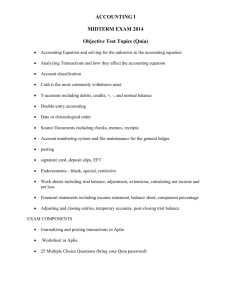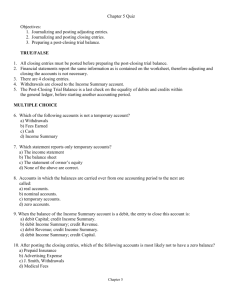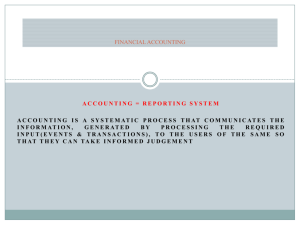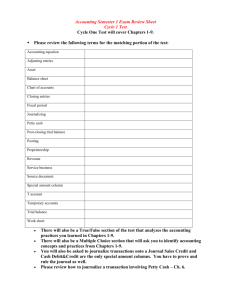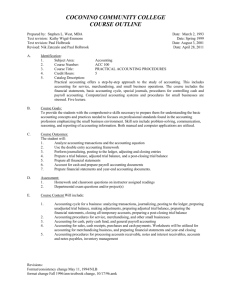accounting cycle - Mikala Beesley ePortfolio
advertisement
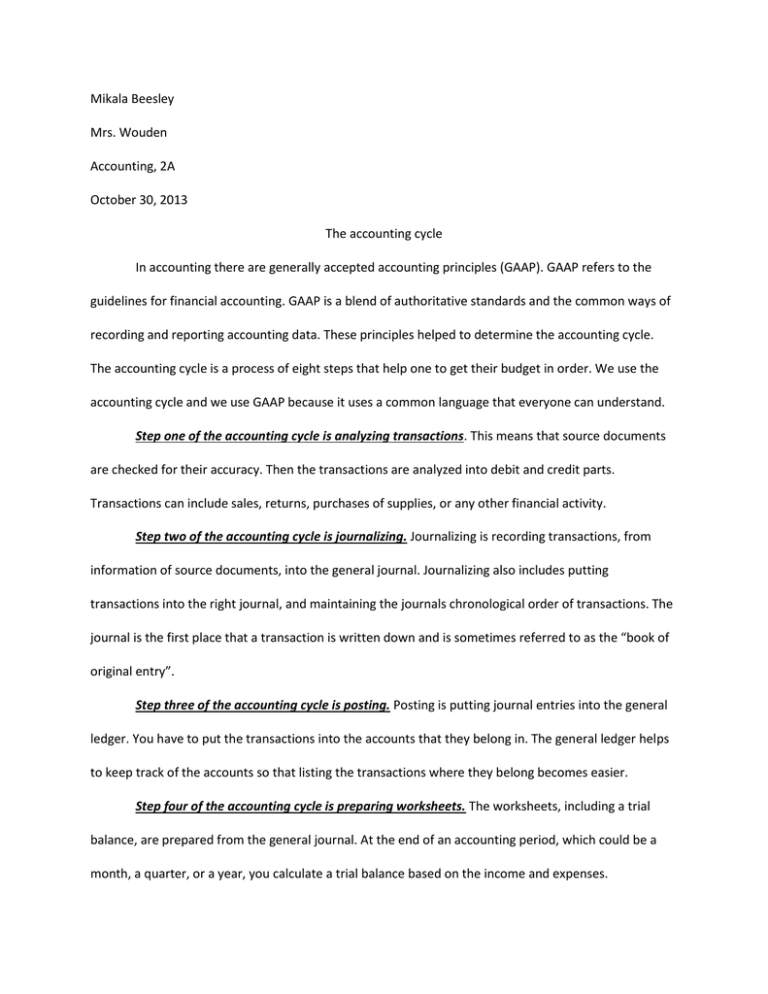
Mikala Beesley Mrs. Wouden Accounting, 2A October 30, 2013 The accounting cycle In accounting there are generally accepted accounting principles (GAAP). GAAP refers to the guidelines for financial accounting. GAAP is a blend of authoritative standards and the common ways of recording and reporting accounting data. These principles helped to determine the accounting cycle. The accounting cycle is a process of eight steps that help one to get their budget in order. We use the accounting cycle and we use GAAP because it uses a common language that everyone can understand. Step one of the accounting cycle is analyzing transactions. This means that source documents are checked for their accuracy. Then the transactions are analyzed into debit and credit parts. Transactions can include sales, returns, purchases of supplies, or any other financial activity. Step two of the accounting cycle is journalizing. Journalizing is recording transactions, from information of source documents, into the general journal. Journalizing also includes putting transactions into the right journal, and maintaining the journals chronological order of transactions. The journal is the first place that a transaction is written down and is sometimes referred to as the “book of original entry”. Step three of the accounting cycle is posting. Posting is putting journal entries into the general ledger. You have to put the transactions into the accounts that they belong in. The general ledger helps to keep track of the accounts so that listing the transactions where they belong becomes easier. Step four of the accounting cycle is preparing worksheets. The worksheets, including a trial balance, are prepared from the general journal. At the end of an accounting period, which could be a month, a quarter, or a year, you calculate a trial balance based on the income and expenses. Step five of the accounting cycle is preparing financial statements. Financial statements are prepared from the worksheets. The financial statement is a formal record of the financial activities of a business, person, or other entity. Financial statements can help you to avoid costly breakdowns. Step six of the accounting cycle is journalizing adjustments and closing entries. After making the financial statement, if there are mistakes, you must make adjustments. Adjustments are any corrections needed that affect the accounts. You don’t need to make adjustments until after the trial balance process is complete. Step seven of the accounting cycle is posting adjustments and closing entries. Adjustments and closing entries are posted to the general journal. This step is when you get the account amounts together so that everything is equal. You prepare the final balance and income using the corrected account balances. Step eight of the accounting cycle is preparing post-closing trial balance. A post-closing trial balance of the general ledger is prepared. Once the closing entries are prepared and posted to the general ledger, another trial balance is prepared to confirm that the total amount of debits in the general ledger equals the total amount of credits.
